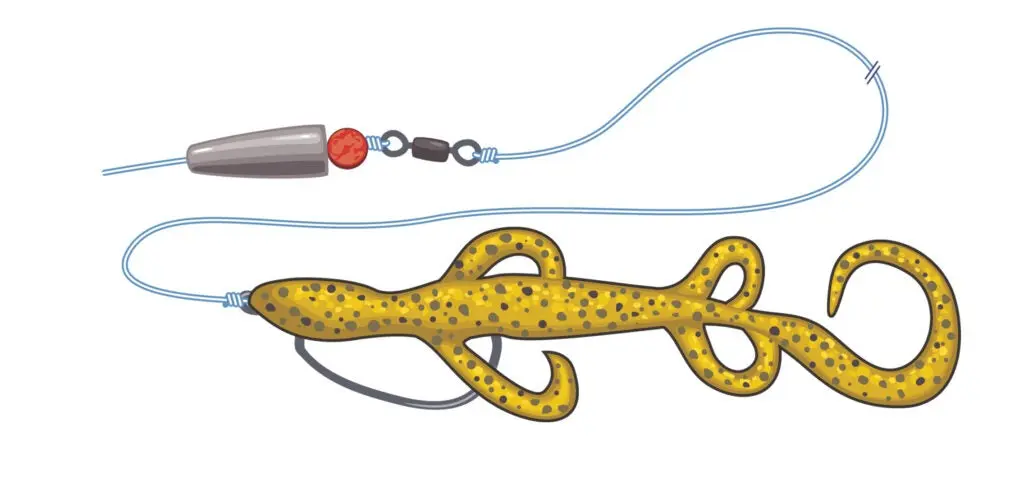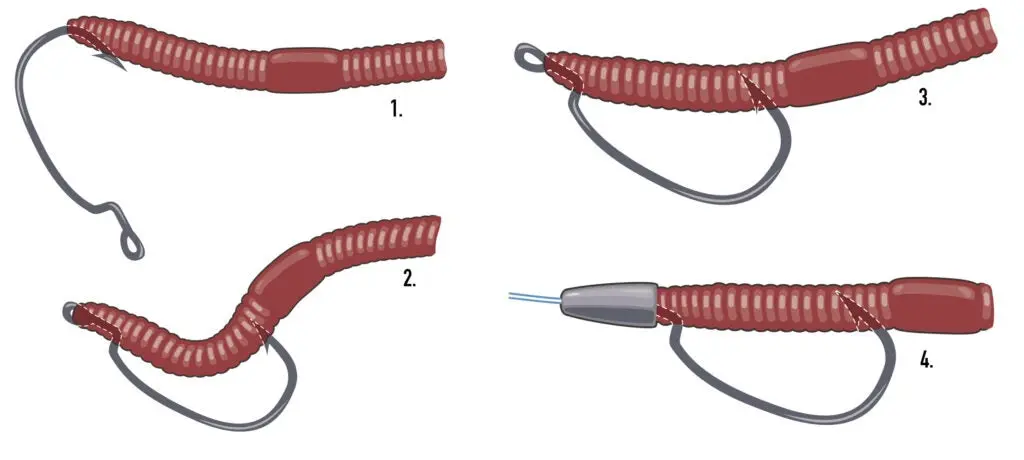_We may earn revenue from the products available on this page and participate in affiliate programs. Learn more ›
_
When learning how to fish for bass
, an essential first lesson for beginners is to master a few essential fishing rigs that use soft baits—whether they’re worms, crawfish, tube baits, or creature baits. Some soft baits come already rigged. Most of the rest use some version of the following rigging methods. These four rigs—the Wacky Rig, Carolina Rig, Texas Rig, and Tube Rig—are some of the most effective methods in catching bass.
Fishing Rig No. 1: How to Fish the Wacky Rig

The Wacky Rig is about as simple as fishing rigs get. Bryon Thompson
The Wacky Rig is crazy-simple, yet highly effective, setup for largemouth and smallmouth bass. Rigging the Wacky Rig just means hooking and slim, soft plastic bait through the middle of the bait. Both ends of the plastic bait are left free to wiggle, and in most cases no weight is added. The Wacky Rig is especially effective with a Senko worm.
Read Next: The 10 Best Live Bait Fishing Rigs
Fishing Rig No. 2: How to Fish the Carolina Rig

The Carolina Rig is a proven fishing method when bottom-dredging for bass. Bryon Thompson
The Carolina Rig is a common choice for bottom dredging. To begin, Texas-rig (see below) a worm or lizard but leave the hook eye exposed. Tie about 18 inches of clear leader between the rigged hook and a small barrel swivel. On your main line, thread first a brass Carolina weight (or a lead sinker), followed by a small, red glass bead. Then tie your main line to the other side of the swivel. The brass weight will click against the glass bead as you fish to help attract bass.
Fishing Rig No. 3: How to Fish the Texas Rig

The Texas Rig works well with a 3/0 Gamakatsu offset-shank worm hook. Bryon Thompson
The Texas Rig might be the most popular bass fishing rig. It is used most often with plastic worms and lizards but is also adaptable to other baits, like jerkbaits. To learn how to rig a soft bait using the Texas Rig, first put a conical worm weight on the line, then attach the hook. Thread the hook point about 1⁄4 inch into the worm’s head and then through the worm’s underside. Slide the worm up the hook shank so it just covers the hook eye. Rotate the hook until it faces upward toward the worm’s body. Grab the worm right behind the hook bend, push its body slightly forward, then bring it back down on the hook point until the point is almost but not quite all the way through the plastic. The bait should now lie straight. I use a 3/0 Gamakatsu offset-shank worm hook for a typical 6- or 7-inch worm, but any similar style is fine.
Fishing Rig No. 4: How to Fish the Tube Rig

A small internal jighead works best for rigging plastic tube baits. Bryon Thompson
There are several good ways to rig tube baits, such as the Gitzit. Most often I go with a small internal jighead. For a 3 1⁄2-inch tube, use a 2/0 1⁄8-ounce, insider-style jighead. Insert the hook in the tube’s head and rotate the hook so it passes down inside the body without exiting. Continue by forcing the head of the jig into the tube, leaving only the hook eye exposed. Then work the hook point out and through the tube at the rear so the tube lies straight.
![Field & Stream [dev]](https://images.ctfassets.net/fbkgl98xrr9f/1GnddAVcyeew2hQvUmrFpw/e4ca91baa53a1ecd66f76b1ef472932b/mob-logo.svg)





